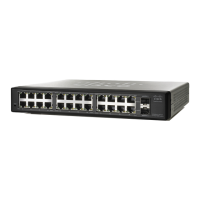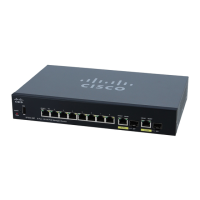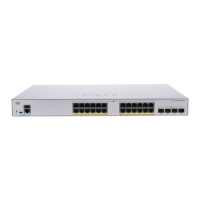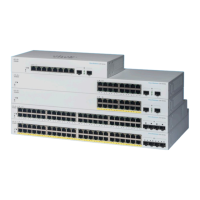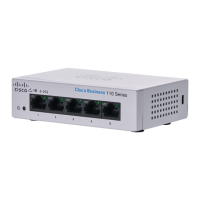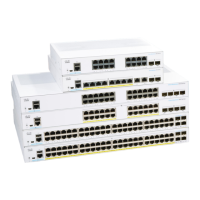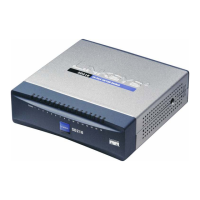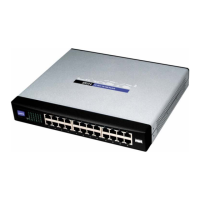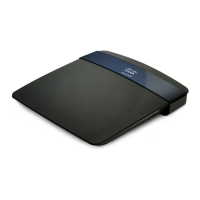Smartport
Configuring Smartport Using The Web-based Interface
Cisco Small Business 200 Series Smart Switch Administration Guide 158
12
• Reapply a Smartport macro to an interface. In some circumstances, you may want to reapply a
Smartport macro so that the configuration at an interface is up to date. For instance, reapplying a
switch Smartport macro at a device interface makes the interface a member of the VLANs created
since the last macro application. You have to be familiar with the current configurations on the
device and the definition of the macro to determine if a reapplication has any impact on the interface.
• Reset unknown interfaces. This sets the mode of Unknown interfaces to Default.
To apply a Smartport macro:
STEP 1 Click Smartport > Interface Settings.
Reapply the associated Smartport macro in the following ways:
• Select a group of Smartport types (switches, routers or APs) and click Reapply Smartport Macro.
The macros are applied to all selected interface types.
• Select an interface that is UP and click Reapply to reapply the last macro that was applied to the
interface.
The Reapply action also adds the interface to all newly-created VLANs.
STEP 2 Smartport Diagnostic.
If a Smartport macro fails, the Smartport Type of the interface is Unknown. Select an interface which is of
unknown type and click Show Diagnostic. This displays the command at which application of the macro
failed. See the workflow area in Common Smartport Tasks section for troubleshooting tips. Proceed to
reapply the macro after correcting the problem.
STEP 3 Resetting all Unknown interfaces to Default type.
• Select the
Port Type
equals to checkbox.
• Select
Unknown
and click Go.
• Click Reset All Unknown Smartports. Then reapply the macro as described above. This performs a
reset on all interfaces with type Unknown, meaning that all interfaces are returned to the Default type.
After correcting the error in the macro or on the current interface configuration or both, a new macro
may be applied.
NOTE Resetting the interface of unknown type does not reset the configuration
performed by the macro that failed. This clean up must be done manually.
To assign a Smartport type to an interface or activate Auto Smartport on the interface:
STEP 1 Select an interface and click Edit.
STEP 2 Enter the fields.
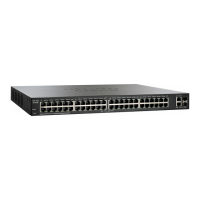
